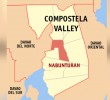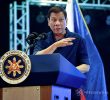PART 1
The recent developments in our country are consequences of unabated enslavement—or puppetry—of our government to the government of the United States of America. All these deplorable consequences are evident in all aspects of our social life—from our economy to our politics to our culture.
They manifest in dialectical intertwining relationship and intimate interpenetration in the three structural aspects of our society. What we witness in the economic situation are effects of political and cultural policies. But it is not a “one-way traffic” phenomenon. The cultural consciousness prevailing in government and among the citizenry influences also the political and economic trends and vice versa. It is good to trace the historical footmarks that caused these social realities for an intelligent understanding of their genesis and perpetual existence.
A Brief Glance at History
Colonization which lasted for more than three centuries of the Filipino people’s subjection to Spanish domination plays a big role in the current social realities in our country. Imagine three hundred years! Because of this extremely long period of enduring the burden of Spanish colonialism what people or constituency could resist assimilation of the foreign colonialists culture?
The view that cultivated the myth of the White strangers’s superiority to the native inhabitants in our lands is one of the pernicious attitudes we have adopted. This constituted one of the deepest cultural root that reinforces the trait of subservience or of looking up to foreigners as superiors, especially the Whites. This is a manifestation of slave mentality which makes us love and long to have white skin and long nose. This also makes us belittle if not regard with disdain the things that pertains to our own racial characteristics. And we rage and scramble to climb the social ladder in order to attain the social status of the Whites. This slave mentality has since melted into the more comprehensive and overriding cultural trait called colonial mentality.
Notwithstanding this unfortunate mentality, patriotic love has not been completely obliterated among the native population. Its feeble embers still burned albeit feebly until it soon gathered defiant flames that urged for the retrieval of the trampled honor of the race. The arrogant display of power and the flagrant abuses of the Spanish colonialists also helped to ignite the pride of the native people. And this challenged the valiants among our race who held up the torch of patriotism and fought against the foreign oppressors. And so within the three centuries of Spanish colonial rule, isolated armed uprisings happened in various places in the archipelago. One of these was the Dagohoy rebellion which caused the establishment of an underground government largely supported by the local population vis-a-vis the Spanish rule and which lasted for more than eighty years. Until, at about the close of the 19th century the entire Filipino people finally united and rose up in a People’s Revolution in 1896 initiated by Gat Andres Bonifacio.
We had succeeded in regaining our freedom from Spanish domination as a nation with the remaining Spanish forces holed in at Intramuros in Manila under siege by the Filipino revolutionary fighters. But a twist of fate occurred at this historical moment when American naval forces under Admiral Dewey grabbed the crown of victory won by the Filipino revolutionary army. Consequently, the Filipino-American war ensued which ultimately ended in defeat for the Filipino revolutionary forces under General Emilio Aguinaldo.
The detailed account of how the Americans deceived and betrayed the Filipinos under Aguinaldo is a disconcerting chapter of our history. [And this can be read in the book Revolt of the Masses by Teodoro Agoncillo]. Thenceforth we became a colony by another foreign colonial power—the American imperialists.










